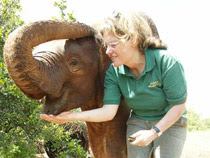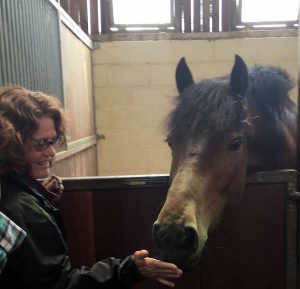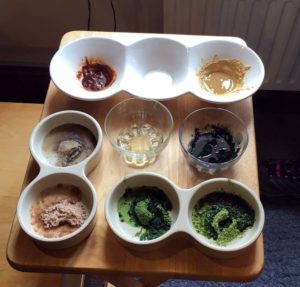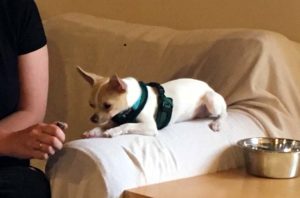Applied Zoopharmacognosy (Animal Self-Selection)
Applied Zoopharmacognosy (“AZ”) has been pioneered by Caroline Ingraham over the past 30 years. Caroline has established “Ingraham Applied Zoopharmacognosy” where she teaches and shares her knowledge with animal owners and professionals around the world.
“Caroline has helped thousands of domestic animals and she has also had great success with orphaned elephant calves at the Sheldrick Trust in Kenya, working with the French government and bio-dynamic farmers, as well as in conservation with endangered species.”
I spent time with Caroline and attended several of her workshops in June 2016 in order to learn more about this amazing modality to be able to begin applying it to my own animals. I am particularly interested in using AZ in conjunction with conventional veterinary medicine and using it to improve the quality of life of some of my animals who suffer from chronic, debilitative diseases such as osteoarthritis.
I have summarised the basic principles of AZ below. Quotations have been gratefully copied from Ingraham Applied Zoopharmacognosy with more information available here.
The word Zoopharmacognosy is derived from the ancient greek ‘zoo’ (animal), ‘pharmaco’ (remedy) and ‘gnosy’ (knowing).
Animals have evolved to cope with potential threats including disease and injury, and as a result have developed solutions to restore health by self-administering medicinal compounds naturally found in the wild.
“Applied Zoopharmacognosy” is the application of this knowledge for animals who do not have access to an environment rich in their natural resources. Zoopharmacognosy is an innate ability (ie. the animal is born with it) and not a learnt behaviour. As this ability is deeply linked to an animal’s survival instinct it has not been lost in domesticated animals. This can be seen when newborn domestic animals select as effectively as wild animals. Animals know what they need, the dose required and ‘how’ they need it – ie. inhaled, internal or topical. The animal is guided by scent and taste.
“Caroline always had an enormous concern for the ethical treatment of animals and their welfare and she has dedicated the last three decades of her life researching and observing how animals heal themselves. Caroline’s work encompasses an understanding of pharmacokinetics and pharmacology combined with animal self-medication.”
“AZ enables self-medicative behaviour in domesticated or captive animals by offering plant extracts that would contain the same, or similar constituents to those found in an animal’s natural environment. The practice encourages and allows an animal to guide its own health, since unlike their wild counterparts, captive and domesticated animals rarely have the opportunity to forage on medicinal plants. The extracts offered include a variety of essential oils, absolutes, plant extracts, macerated oils, tubers, clays, algae, seaweeds and minerals.”
By the time we detect signs of disease in an animal, the disease process is generally already well established. In the wild, animals would have sought remedies early on in a disease process in order to restore health. By providing animals with access to remedies, they are able to point to and resolve problems that may not be clinically apparent or easily diagnosed.
AZ is a form of “individualised medicine”. Every animal has unique experiences and unique physiology – just like people. Some people can tolerate certain foods, drugs, etc while others cannot. We are all individuals just like animals, it is therefore important to provide a choice of remedies to animals to determine the most suitable remedy, dose and mode of administration for the particular individual.
While AZ might sound like a relatively simple process, it is in fact an incredibly complex skill. There are close to 100 different remedies that can be used and it is completely individualised to each case. While there are patterns and themes and common remedies that are frequently selected by animals it requires significant experience and very keen observational skills to truly become proficient at AZ.
It is also important to appreciate that AZ is not intended to replace veterinary care or to be used to diagnose medical conditions. AZ can provide information and amazing benefits but it is not ok to let an animal suffer when it requires veterinary attention. AZ is a fantastic complement to traditional veterinary care.
For a more detailed background about AZ visit Caroline’s website and check out this recent interview with Caroline by Dr. Karen Becker, a proactive and integrative wellness veterinarian
And this article: Empowering Pets to Heal Themselves Through Self-Medication
For a selection of videos demonstrating zoopharmacognosy see my video page here.




